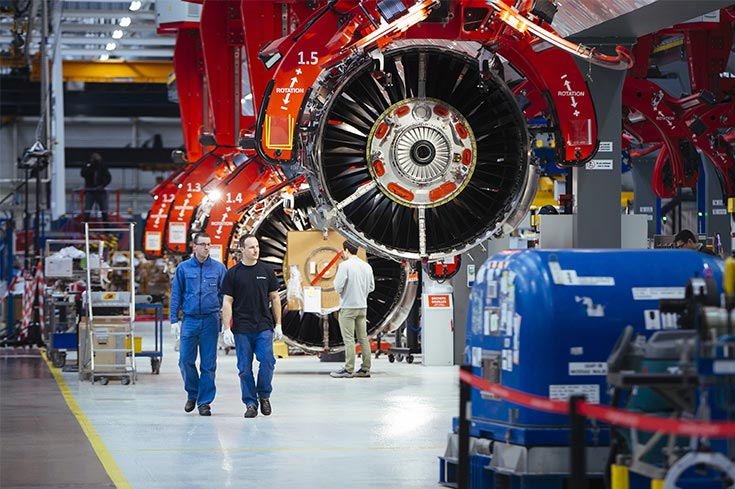Safran unveiled ambitions to become the world’s leading aerospace supplier in 15 years, overtaking United Technologies, as it pledged a research and development (R&D) spending drive while increasing cash returns to shareholders.
The French aerospace engine and equipment supplier added that it did not plan major new acquisitions after buying Zodiac Aerospace to become, according to its calculations, the world’s second-largest aerospace supplier behind United Technologies.
“The priority will focus on organic development,” it said in a statement ahead of a capital market presentation.
The event comes days after conglomerate United Technologies completed its acquisition of Rockwell Collins and announced plans to split itself into three by 2020.
Safran, which co-produces engines for narrow-body jets with General Electric, said it was gearing up for a new cycle of research and development (R&D) partly driven by a new mid-market jet being studied by Boeing, depending on whether it goes ahead.
It also pledged “targeted” R&D efforts at Zodiac and a 30 per cent increase in broader research and technology spending as it laid out plans for better propulsion aircraft with more electrics and connected cabins, and wider use of 3D printing.
It predicted like-for-like revenue percentage growth in mid-single digits over 2019-2022 and a recurring operating margin “trending to a 16-18 per cent range” by 2022 after the engine model switch and the recovery of Zodiac’s interiors business.
Safran made a 14.6 per cent margin in the first half.
The company plans to invest in more maintenance and repair activities as it relies more heavily on power-by-the-hour contracts for its new ‘LEAP’ engine, underpinning a forecast of high single-digit growth in civil aftermarket sales in 2018-22.
Safran said it was accelerating the operational recovery of Zodiac Aerospace from the repeated production problems that forced it into Safran’s arms earlier this year.
It confirmed a goal of 200 million euros ($228 million) of annual pre-tax cost savings from the merger by 2022 and said “further upside has been identified.” (Reuters/NAN)



Leave a Reply